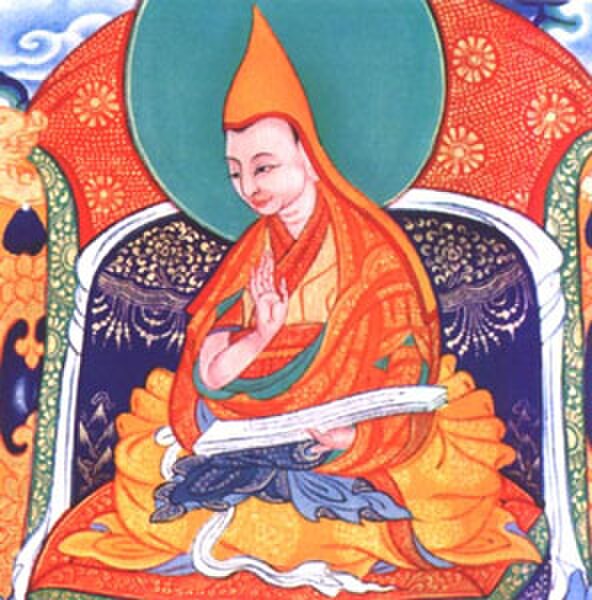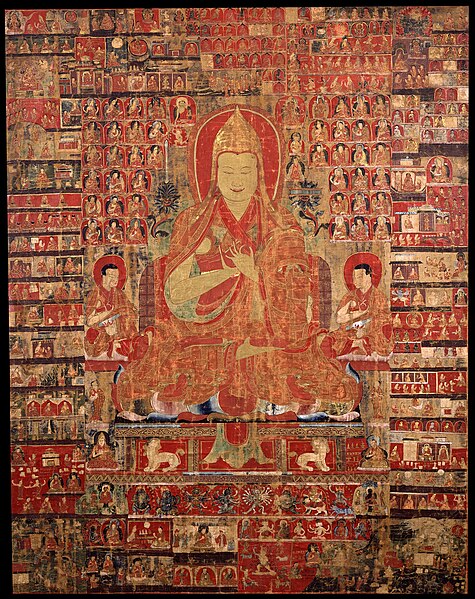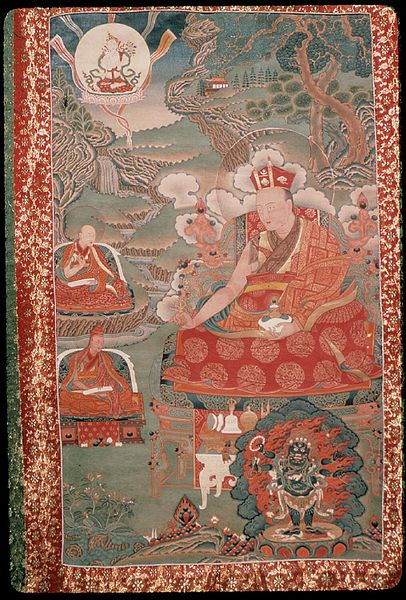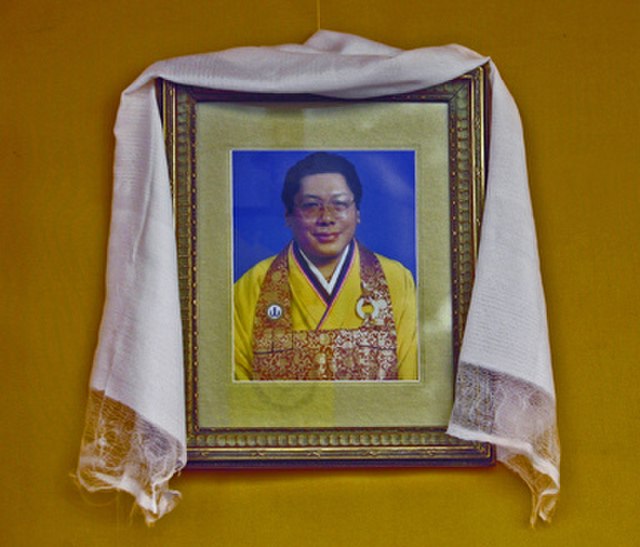The Panchen Lama is a tulku of the Gelug school of Tibetan Buddhism. The Panchen Lama is one of the most important figures in the Gelug tradition, with its spiritual authority second only to the Dalai Lama. Along with the council of high lamas, he is in charge of seeking out the next Dalai Lama. Panchen is a portmanteau of Pandita and Chenpo, meaning "great scholar".
Khedrup Gelek Pelzang, 1st Panchen Lama
3rd Panchen lama, b.1505 – d.1556
9th Panchen Lama, Thubten Choekyi Nyima taken 1907 by Sven Hedin. Published in his 1922 book "Trans-himalaya"
The 14th Dalai Lama and the 10th Panchen Lama, 1954.
A tulku is a distinctive and significant aspect of Tibetan Buddhism, embodying the concept of enlightened beings taking corporeal forms to continue the lineage of specific teachings. The term "tulku" has its origins in the Tibetan word "sprul sku", which originally referred to an emperor or ruler taking human form on Earth, signifying a divine incarnation. Over time, this term evolved within Tibetan Buddhism to denote the corporeal existence of highly accomplished Buddhist masters whose purpose is to ensure the preservation and transmission of a particular lineage.
Tsongkapa, 15th-century painting, Rubin Museum of Art
Thangka of Tai Situ
Chogyam Trungpa Rinpoche, the 11th Trungpa tülku
Khedrup Gelek Pelzang, 1st Panchen Lama







